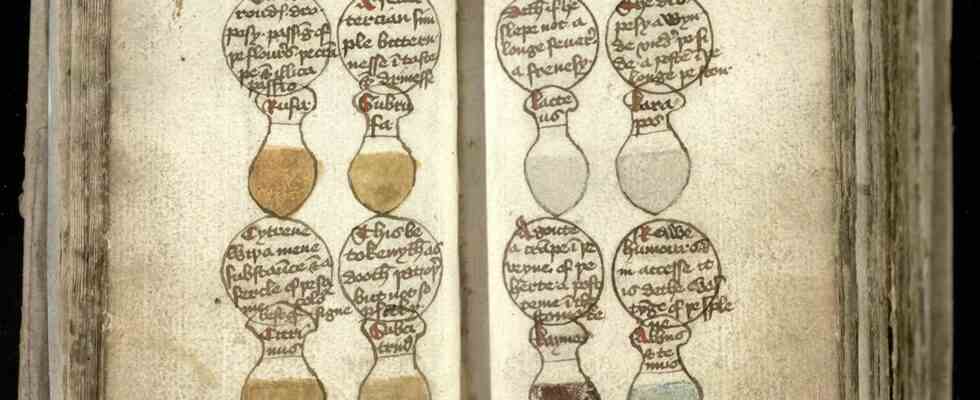treatment methods
“Medicines” made from roasted puppies, owls and boar fat: University of Cambridge shows medicine from the Middle Ages
Treatment methods in the Middle Ages: Different colorings of the urine are explained here
©University of Cambridge
In the Middle Ages, doctors sometimes resorted to cruel methods to heal people. Many of the healing recipes from back then sound disgusting today, but they also show the value of today’s medicine.
Damsels, noble knights and castles – some ideas about the Middle Ages seem romantic. But on closer inspection, it becomes increasingly unattractive to swap places with people from this era.
The hygienic and medical standards of that time alone make people shudder. Treatment methods that are described in old manuscripts show how people and animals were sometimes treated at that time.
The University Library in Cambridge is currently digitizing more than 180 medieval documents which, according to the university, contain more than 8,000 medical treatment methods. And from today’s point of view, they have it in part. Under the heading “Please don’t try this at home,” the university published a few samples – including images that are painful to look at.
University project provides insights into medieval medicine
Animals were often harmed in a cruel manner. A whimsical healing recipe: for gout, a puppy should be stuffed with snakes and sage and then roasted over a fire. An ointment was then made from the fat obtained in this way, which was supposed to help against the widespread disease.
Another method involved baking a salted owl, then grinding it into a powder and mixing it with boar fat. The ointment should then be rubbed on the sick person’s body. Not much more appetizing either: A rabbit’s gallbladder was mixed with honey and applied to the eye of a sick person. This should be used to treat cataracts.
The Pain of the Middle Ages
According to the university, most of the manuscripts date from the 14th and 15th centuries, with the oldest being a thousand years old. Many are written as instructions in a style similar to today’s cookbooks. It contains many herbs that are still well known today: sage, rosemary, thyme and mint, for example.
Other recipes show the brutality of life in the Middle Ages, meticulously specifying how to determine if a skull was broken by force of arms. In addition, many treatment methods sound extremely painful for the sufferer – and this at a time when anesthetics were only rudimentarily known and only very rarely available.
The knowledge about the dubious healing methods in the Middle Ages increases the appreciation for modern medicine even more, says historian James Freeman, who leads the project: “These recipes are reminiscent of the pain and uncertainty of medieval life – before antibiotics, antiseptics and painkillers as we know them today.”
Source: University of Cambridge



